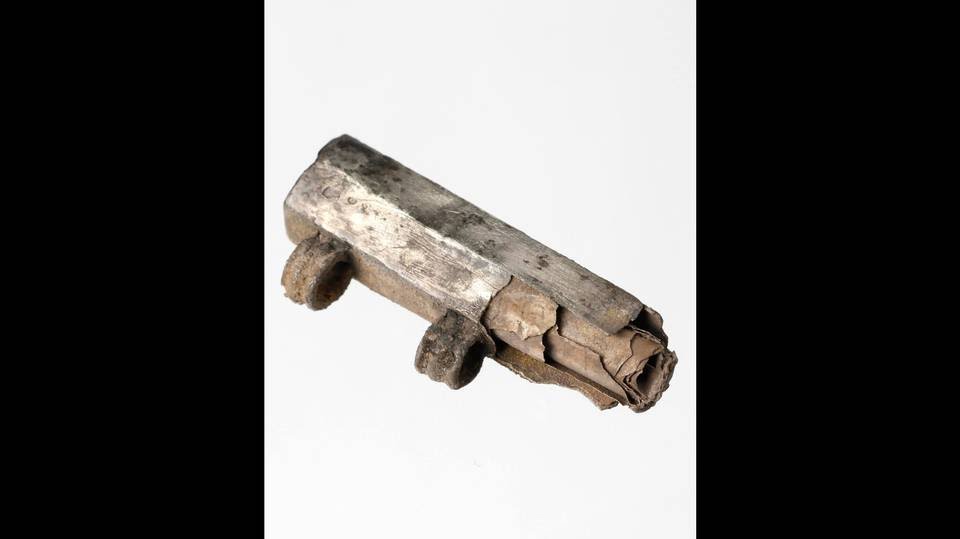
Archaeologists in Germany have confirmed the invention of a 1,750-year-old amulet containing a silver scroll, now believed to be the oldest bodily proof of Christianity north of the Alps.
The extraordinary artifact was first found in 2018 throughout the excavation of a Roman-era grave in Frankfurt and was formally introduced in a press launch from the town of Frankfurt am Predominant on 11
The tomb, dated to between 230 and 270 AD, contained an amulet inside which archaeologists seen a small silver scroll. Nonetheless, its fragility offered vital challenges to researchers trying to learn its contents.
Preliminary efforts to unroll the scroll by hand had been deserted to keep away from harm. Subsequent makes an attempt utilizing X-rays and microscopes produced little progress.
Lastly, a 3D X-ray methodology referred to as computed tomography was used, permitting specialists to digitally “unfold” the scroll with out having to bodily deal with it. This course of revealed 18 strains of Latin textual content that linguists spent months deciphering.

The inscription consists of sentences praising Jesus Christ, together with the phrases: “Holy! Holy! Holy! Within the title of Jesus Christ, the Son of God… Shield the one that submits to the desire of the Lord Jesus Christ, the Son of God, for earlier than Jesus Christ he bows every knee.”
Archaeologists consider the grave belonged to a Christian man who in all probability wore an amulet on a wire round his neck, much like the phylactery utilized in Jewish custom. The artifact would function a talisman of safety in addition to an expression of non-public devotion. On the time, the Frankfurt space was managed by the Roman Empire, so brazenly training Christianity was harmful. It stays unclear whether or not the person practiced his religion publicly or secretly.
This discovery predates beforehand identified proof of Christianity north of the Alps, which was primarily based on historic references and artefacts dated round 300 AD.
Specialists described the discover as extraordinary and sensational, providing an unprecedented perception into the lifetime of early Christians within the area. It highlights their devotion and the dangers they confronted in sustaining their religion.
Photographs shared by metropolis officers present the amulet because it was found, partially buried within the soil, together with photos of the silver scroll and its deciphered inscription.
This spiritual artifact has raised new questions for archaeologists, historians, and theologians concerning the unfold of Christianity to Northern Europe throughout its early life.
